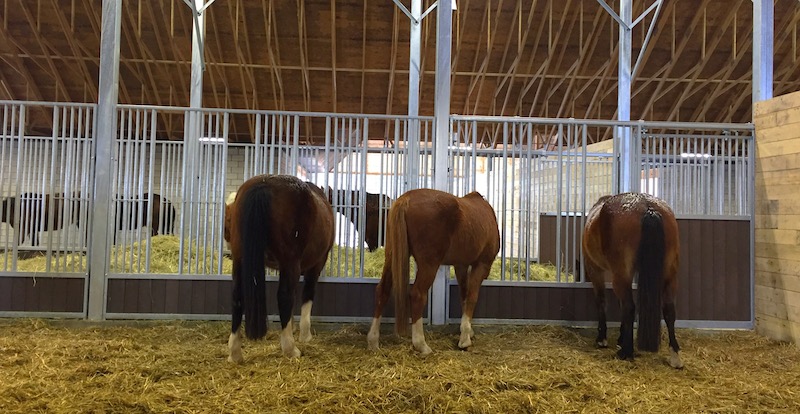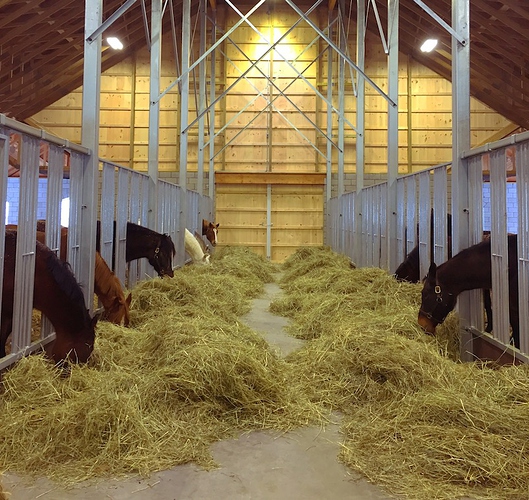I believe this is a custom barn, modeled after some aspects of standard dairy barns. I don’t believe there is an official name in the horse world besides ‘modified dairy barn’ - when I worked int the barn building industry this was referred to as a “custom barn”. The photos are from JMS’ barn, @beau159 - the facility owned by the Maddens. That barn has no ‘true’ stalls; IIRC the aisleway is 16ft and the stall area themselves something like 30 ft deep - this is not at all the normal 36ft barn set up with 12x12 stalls on one side, 12ft in middle and 12x12 stalls on the other.
This is a great approach to horsemanship-centric care versus industry-standard care, the two philosophies sometimes intersecting and then diverging due to constraints like rising land costs, increased amount of horses on smaller acreage, etc. Certain sacrifices must be made in areas with high human/horse population, and most barns are modeled now to fit as many horses in as little space.
To the average BO this kind of set up is not realistically in reach. If you are looking for something similar, I think the best set up is a shedrow with an open side and Hayhuts interspered out in the paddock/pasture.
I don’t see the gap as an issue but I do have experience with cattle and this kind of set up. Often it is the most pragmatic approach to feeding bulk head, and the cattle/horses having to put their heads through slots to eat keeps them stationary, which reduces bullying and food squabbling significantly because the bullies are too busy stuffing their faces to push others around.




:max_bytes(150000):strip_icc()/dairy-farm-cows-indoor-in-the-shed-944687452-524cc91130424605ba29412edffa105d.jpg)
 and failing that, the biggest pasture or turnout you can manage on the land you can afford, with run in shelters and supplementary hay fed as needed. A round bale in a hay hut, or small bales tossed put daily.
and failing that, the biggest pasture or turnout you can manage on the land you can afford, with run in shelters and supplementary hay fed as needed. A round bale in a hay hut, or small bales tossed put daily.
 .
.